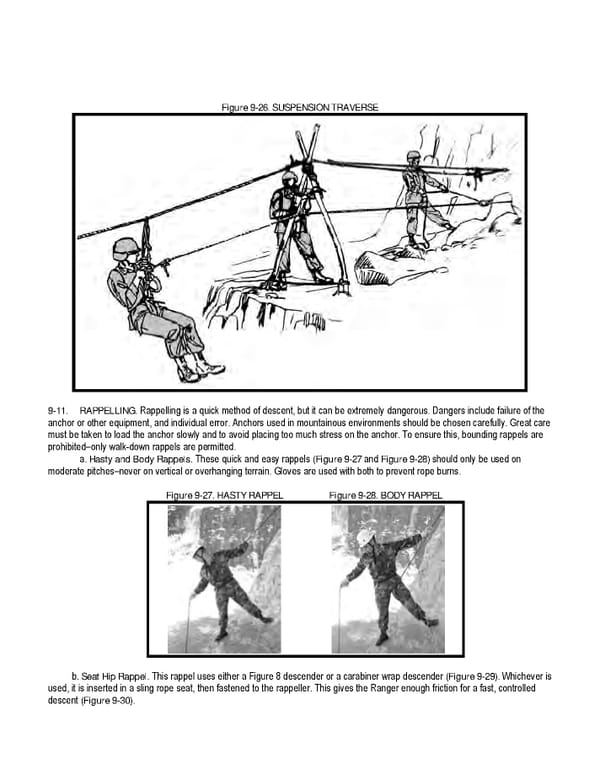Figure 9-26. SUSPENSION TRAVERSE 9-11. RAPPELLING. Rappelling is a quick method of descent, but it can be extremely dangerous. Dangers include failure of the anchor or other equipment, and individual error. Anchors used in mountainous environments should be chosen carefully. Great care must be taken to load the anchor slowly and to avoid placing too much stress on the anchor. To ensure this, bounding rappels are prohibited–only walk-down rappels are permitted. a. Hasty and Body Rappels. These quick and easy rappels (Figure 9-27 and Figure 9-28) should only be used on moderate pitches–never on vertical or overhanging terrain. Gloves are used with both to prevent rope burns. Figure 9-27. HASTY RAPPEL Figure 9-28. BODY RAPPEL b. Seat Hip Rappel. This rappel uses either a Figure 8 descender or a carabiner wrap descender (Figure 9-29). Whichever is used, it is inserted in a sling rope seat, then fastened to the rappeller. This gives the Ranger enough friction for a fast, controlled descent (Figure 9-30).
 Ranger Handbook Page 189 Page 191
Ranger Handbook Page 189 Page 191